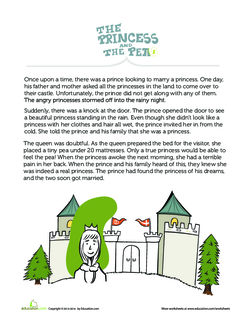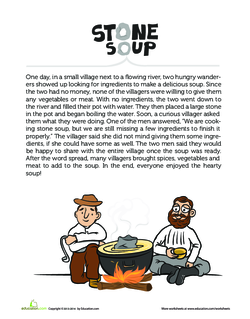- Worksheets
- Games
- Lesson Plans
- Workbooks
- Exercises
- Science Projects
- Skills Progression
- More
You are here:
Lesson Plan
Traditional Literature: Story Mapping
Students will learn how to identify story elements and create a short and sweet summary. They will fill out a graphic organizer and solidify their understanding by creating illustrations to show major plot points that they find themselves!
Grade
Subject
View aligned standards
Learning Objectives
Students will be able to recount fictional stories, highlighting the important story elements.
The adjustment to the whole group lesson is a modification to differentiate for children who are English learners.
Introduction
(5 minutes)- Tell students that a popular strategy for understanding stories is to figure out the main problem, or the matter that needs to be resolved, of the story. The way the problem is fixed is called the solution of the story.
- Explain to students that finding the problem and the solution of a story can help us understand the characters' actions and the important events that take place in the story.
Beginning
- Provide visuals and meanings of the vocabulary terms.
- Have ELs to turn and talk to a partner to discuss the key terms in their home language (L1) or their new language (L2). Provide the following sentence frames:
- "I think 'problem' means..."
- "I think 'solution' means..."
Intermediate
- Allow ELs to rephrase the meaning of "solution" and "problem."
- Provide an everyday example of a problem and solution that is familiar to your ELs.





